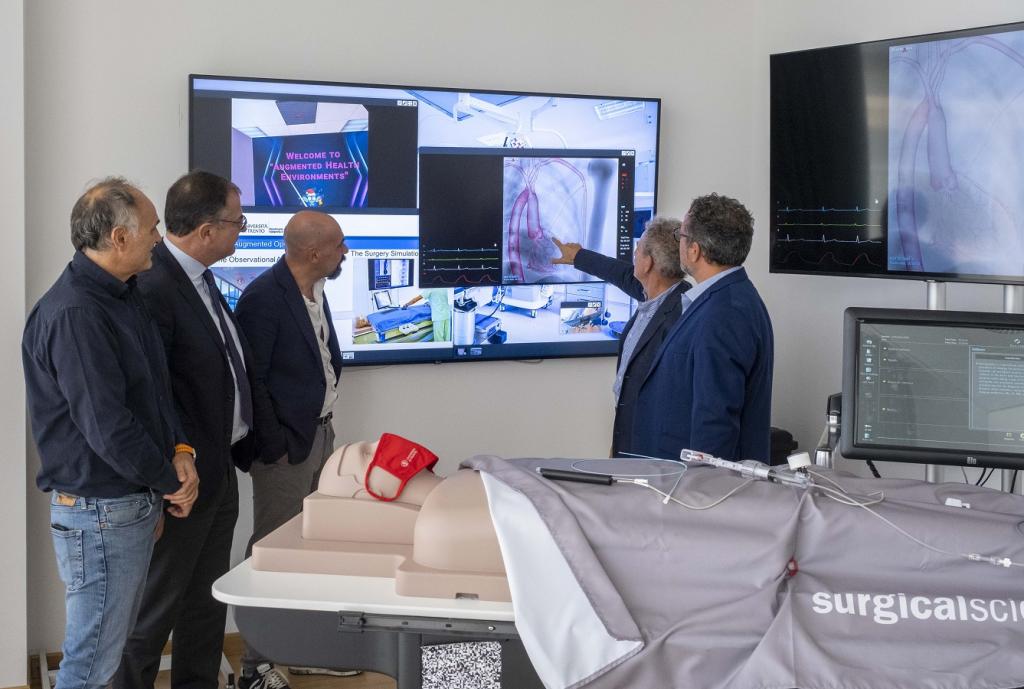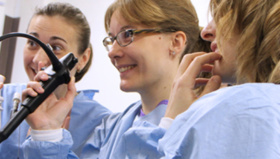Trento University’s Cutting-Edge Lab Integrates Technology and Medicine for Enhanced Healthcare
In a groundbreaking collaboration between the University of Trento University and the provincial company for health services, barriers between medical research and practical healthcare are broken down, aiming to harness technology to improve diagnostics and treatment.
 Upon entering the high-tech surgical rooms equipped with an array of devices, including big screens, sensors, simulators, and robotic arms, visitors are transported into a realm where innovation meets healthcare. The laboratory serves as an experimental space to leverage existing technological solutions, such as simulations of endovascular surgery on the aorta, with Surgical Science’s ANGIO Mentor simulator.
Upon entering the high-tech surgical rooms equipped with an array of devices, including big screens, sensors, simulators, and robotic arms, visitors are transported into a realm where innovation meets healthcare. The laboratory serves as an experimental space to leverage existing technological solutions, such as simulations of endovascular surgery on the aorta, with Surgical Science’s ANGIO Mentor simulator.
The laboratory distinguishes itself as one of the first of its kind globally, focusing on the intersection of physical and virtual spaces to create a seamless connection between research and clinical applications.
The project faces challenges related to the disparity between medical training and scientific advancements. Giorgini and Riccardi emphasize the need for updated training methods, especially for the digital-native generation entering the medical profession. The newly established training, research, and coaching laboratory at UniTrento and Apss aims to address this gap, providing a collaborative space for medical and engineering personnel in training.
The laboratory’s augmented surgical theater, simulating cardiovascular pathology scenarios, will conduct analyses of behavior, group dynamics, and decision-making processes. The objective is to enhance team dynamics, reduce errors, and optimize processes within operating room teams.
The TANGO project
The University of Trento and Surgical Science are both members of the TANGO Project, an EU Horizon-funded project with the overall goal of developing the theoretical foundations and the computational framework for synergistic human-machine decision making, paving the way for the next generation of human-centric AI systems.











